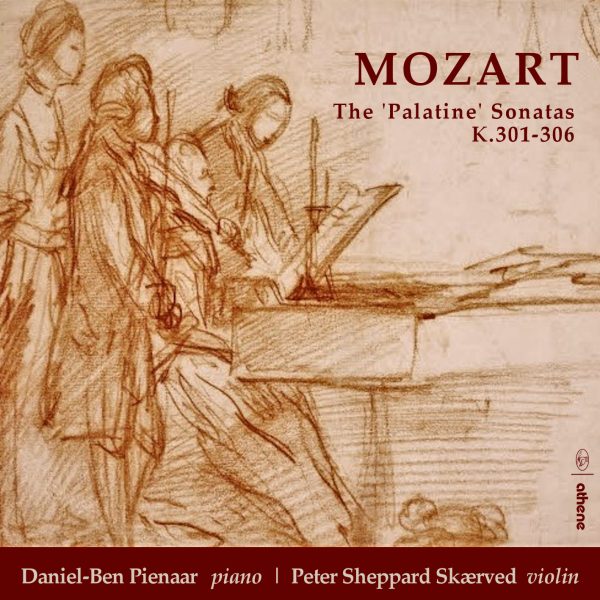Gramophone
The six violin sonatas Mozart composed in Mannheim and Paris during the spring and summer of 1778 don’t often appear as a discrete set on recordings, still less on a single disc. Alina Ibragimova and Cédric Tiberghien, for example, in their 10-CD set of the complete sonatas, take a total of 97 minutes over these works, albeit scattered throughout their survey. That Peter Sheppard Skærved and Daniel-Ben Pienaar bring in all six sonatas in just under 80 minutes is due partly to their go-ahead speeds but also to their omission of at least one of the second-half repeats in each work.
Another recognisable difference is in the sound of the two recordings. The Hyperion pair give an aura of confiding intimacy in the spacious acoustic of the 555-seat hall at Wyastone Leys in Monmouth, while the Athene players opt for a more outgoing presentation with closer miking in the 100-seat Angela Burgess Recital Hall at the Royal Academy of Music. Ibragimova’s pianissimo is accordingly more hushed, although Sheppard Skærved otherwise offers a full range of expressive and dynamic effects. Pienaar, meanwhile – as befits one who has recorded a ‘thoughtful, profound’ set of the complete piano sonatas (an Editor’s Choice) – is far from relegated to the role of mere accompanist. In keeping with the standard designation of these works as ‘sonatas for clavier with violin accompaniment’, he approaches them, appropriately enough as keyboard works primarily, with all that implies in terms of rhetorical reactivity to the score, which is treated throughout as a starting point rather than the final word.
These sonatas were composed during a period of emotional upheaval for the 22-year-old composer, In Mannheim he fell in love (with the girl whose sister he later married); later on, in Paris, he had to deal with the sudden death of his mother. While it is perhaps too easy to read the biography into the music, the outward high spirits of the D and A major Sonatas could be seen as a reflection of the first of these events, the emotional ambiguity of the E minor among the repercussions from the shock of the latter.
Sheppard Skærved and Pienaar respond in an appreciably volatile way to the burgeoning range of affects demanded by this music, and if you seek a compact presentation such as this of these six works, it could well fit the bill.
@divineartrecordingsgroup
A First Inversion Company
Registered Office:
176-178 Pontefract Road, Cudworth, Barnsley S72 8BE
+44 1226 596703
Fort Worth, TX 76110
+1.682.233.4978











![Listen to the full suite of Marcel Dupré’s Variations Sur un Noël, Op. 20 from Alexander Ffinch’s #Expectations release today! listn.fm/expectations [in bio]](https://scontent-dfw5-1.cdninstagram.com/v/t51.71878-15/588904367_2327488161082898_8709236950834211856_n.jpg?stp=dst-jpg_e35_tt6&_nc_cat=105&ccb=7-5&_nc_sid=18de74&efg=eyJlZmdfdGFnIjoiQ0xJUFMuYmVzdF9pbWFnZV91cmxnZW4uQzMifQ%3D%3D&_nc_ohc=BGoHgV_YYfIQ7kNvwGYDL2n&_nc_oc=AdmifsAOE9lr-TUgsUPM2JNL4EmaxT0l8hwVPEqpLUdL6LHgBlrgsWEQE1Hh6E1WDI4&_nc_zt=23&_nc_ht=scontent-dfw5-1.cdninstagram.com&edm=ANo9K5cEAAAA&_nc_gid=3AIm3A0lYy7p2zTnmtjKNA&oh=00_AfptFiusEugwFLXgfU7pjMhfDVwBDPUFv9UbtEXrmHy2UQ&oe=695E332A)
